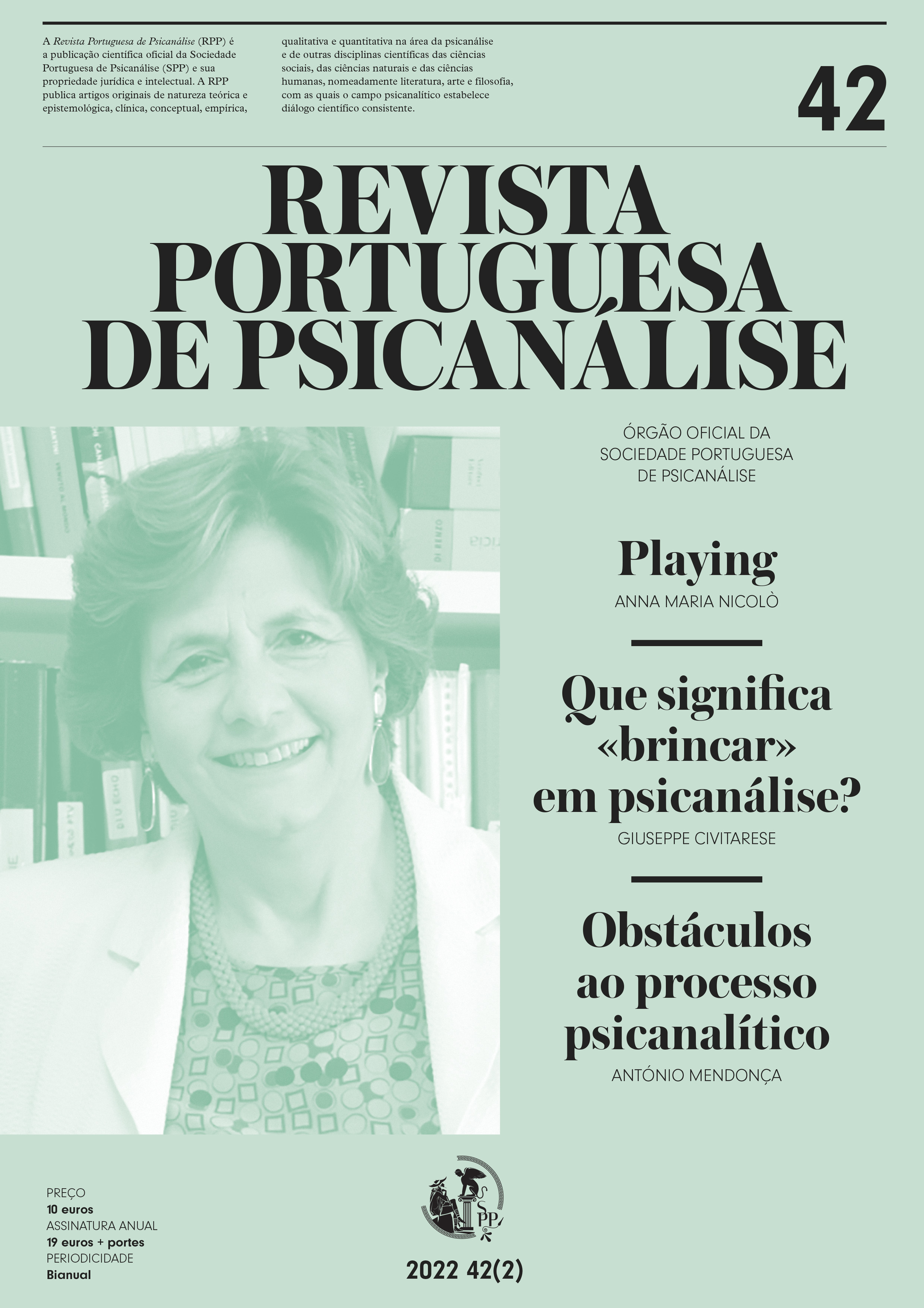Obstáculos ao processo psicanalítico: O impacto das partes construtivas e destrutivas da mente

Abstract
The author develops a theoretical and clinical reflection on the obstacles to the psychoanalytic process, emphasizing the dynamic interaction between the constructive and destructive parts of the mind, both in the formation of personality and during the psychoanalytic process, following a conceptual line that begins with Freud and continues in Melanie Klein, Wilfred Bion, Herbert Rosenfeld, Donald Meltzer, John Steiner, Andre? Green, Otto Kernberg and Christopher Bollas. He also reflects on the evolution of the different paradigms of psychoanalysis, highlighting both the new theoretical and clinical conceptions that imply a repositioning in the psychoanalyst’s activity, as well as the way in which he should adapt his clinical practice to the transformations of the setting in order to maintain and reinforce the analytic identity.
Keywords
Psychoanalytic process, Constructive parts of the mind, Destructive parts of the mind, Psychoanalytic identity
Author Biography
António Mendonça
Psicanalista titular da Sociedade Portuguesa de Psicanálise e membro da Associação Psicanalítica Internacional (IPA) e da Fédération Européenne de Psychanalyse (FEP).
References
- Barros, E. M. R. (1988). Prefácio à edição Brasileira de Herbert Rosenfeld. Em Herbert Rosenfeld, Impasse e Interpretação (pp. 9–30). Imago.
- Bion,W. R. (1973). Atenção e interpretação. Imago. Bion,W. R. (1991a). O Aprender com a experiência. Imago.
- Bion, W. R. (1991b). Elementos em psicanálise. Imago.
- Bollas, Christopher (1998). Sendo Um Personagem. Revinter.
- Freud, S. (1920). Além do princípio do prazer. Em Edição Standard Brasileira das Obras Psicológicas Completas de Sigmund Freud (vol. xviii, pp. 17–85). Imago.
- Freud, S. (1923). O ego e o id. Em Edição Standard Brasileira das Obras Psicológicas Completas de Sigmund Freud (vol. xix, pp. 13–83). Imago.
- Freud, S. (1926). Inibições, sintomas e ansiedade. Em Edição Standard Brasileira das Obras Psicológicas Completas de Sigmund Freud (vol. xx, pp. 95–201). Imago.
- Freud, S. (1932). Por Que a Guerra? (Einstein e Freud). Em Edição Standard Brasileira das Obras Psicológicas Completas de Sigmund Freud (vol. xxii, pp. 237–259). Imago.
- Freud, S. (1937). Análise terminável e interminável. Em Edição Standard Brasileira das Obras Psicológicas Completas de Sigmund Freud (vol. xxiii, pp. 239–287). Imago.
- Green, A. (1988). Narcisismo deVida e Narcisismo de Morte. Escuta.
- Horney, K. (1936). The problem of the negativ therapeutic reaction. The Psychoanalytic Quaterly, 5, 27–44.
- Kernberg, O. F. (2006). Agressividade, Narcisismo e Auto-destrutividade na Relação Psicoterapêutica. Climepsi.
- Klein, M. (1970). Contribuições à Psicanálise. Mestre Jou.
- Klein, M. (1975). Inveja e gratidão. Em Obras completas de Melanie Klein (vol. iii, pp. 205–267). Imago.
- Meltzer, D. (1979). Estados sexuais da mente. Imago. Riviere, J. (1949). Contribuición al análisis de la reácion terapeutica negativa. Revista de Psicoanálisis, 7, 121–142.
- Rosenfeld, H. (1988). Impasse e Interpretação. Imago.
- Steiner, J. (1997). Refúgios Psíquicos. Organizações patológicas em pacientes psicóticos, neuróticos e fronteiriços. Imago.
- Zimerman, D. E. (2001). Vocabulário Contemporâneo de Psicanálise. Artmed.